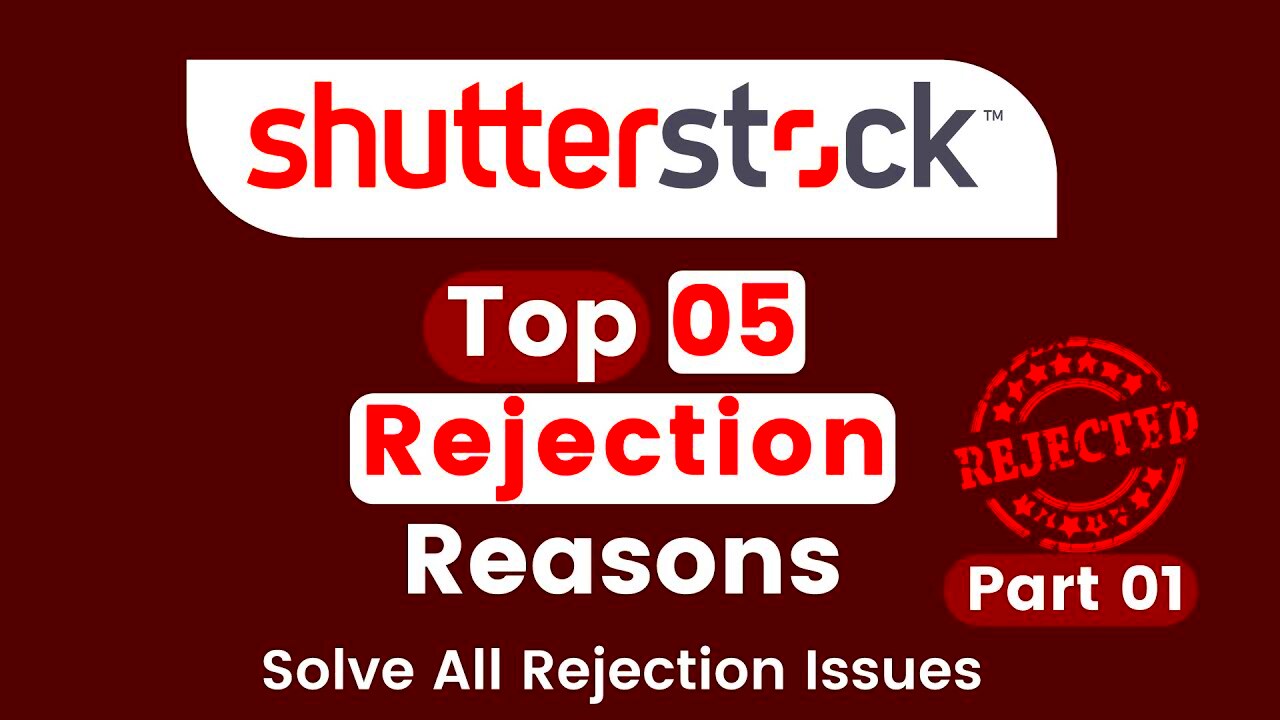More than simply uploading fresh photos, managing your
Shutterstock portfolio means curating what you already have. I remember when I first received rejections within this area: It felt so disheartening at that point in time! However, later on, it dawned upon me that avoiding rejections can perfect my production as well as improve my name!Consider your portfolio like a garden. If you allow weeds to grow- those rejected photographs, they will overshadow your best work. Reviewing and organizing your collection regularly makes your strongest images more prominent. This not only increases the chances of future acceptances but also indicates to potential buyers how serious you are about it.
Benefits of a Well-Managed Portfolio:- Increased visibility for accepted images
- Improved chances of future acceptances
- Better representation of your skills
Steps to Access Your Rejected Photos on Shutterstock

However it might not look easy at first, accessing your discarded pictures on
Shutterstock is a simple process. When I attempted this for the first time, I was confused. Here are the steps to follow when looking for those images.
- Log into your Shutterstock account: Start by visiting the Shutterstock homepage and entering your login details.
- Navigate to your portfolio: Click on your profile icon and select “Portfolio” from the dropdown menu.
- Check your submissions: Look for the section that lists all your submissions, both accepted and rejected.
- Filter rejected photos: Use the filter option to view only your rejected submissions. This will help you focus on what needs to be addressed.
How to Select and Delete Rejected Photos

After gaining entry to the rejected photographs, it is time to choose. I have experienced the same thing previously, gazing at those pictures and pondering if they deserved that fate. Here is an easy technique of determining which images should be deleted.
Criteria for Deletion:- Consider the quality: Is the image technically sound?
- Assess the theme: Does it fit your overall portfolio style?
- Review the feedback: Was there specific criticism from reviewers?
Hereafter meeting the above prerequisites, then deleting those images should be an effortless task. A simple click on any photo would do and afterwards find the delete button. It might be difficult to part with them but always bear in mind that every single removed image builds up your portfolio конкурентоспособным.
Tips for Organizing Your Shutterstock Submissions
Initially, when I began uploading pictures to
Shutterstock, my collection seemed like a disorganized cupboard with a lot of pictures. But as soon as I understood why there had to be order in this chaos, my submissions started themselves sparkling. The process of ordering your images on
Shutterstock may not only facilitate work flow but also improve likelihood for acceptance.
Here are some practical tips:- Create folders: Group your images by theme or category. For instance, if you have travel photos, create a dedicated folder for them. This helps in quickly locating images when needed.
- Use tags wisely: Tags are crucial for searchability. Make sure you are using relevant keywords that describe your image accurately. I often spend time brainstorming the best tags to enhance discoverability.
- Regular reviews: Set aside time each month to review your portfolio. This is a chance to update your images, remove those that don't fit, and add new ones. This keeps your collection fresh and relevant.
An organized portfolio not only makes it easier for you but also presents a professional image to potential buyers. Every picture should have a story behind it, and having everything organized helps in telling this story well.
How Deleting Rejected Photos Can Improve Your Profile
To delete rejected photos is like getting rid of an old outfit that you still love; it is hard and painful. However, I promise you that this is a groundbreaking and beneficial act. I still remember when I first clicked on the delete button for a number of pictures; relief and doubt overwhelmed me all at once. But it was instant when I saw what changing my portfolio meant to me.Reasons for removing discarded images from your profile:
- Focus on quality: Removing low-quality images allows your best work to shine. A smaller collection of high-quality photos speaks louder than a large one filled with mediocre images.
- Showcase your growth: Your portfolio reflects your evolution as a photographer. By eliminating rejected images, you demonstrate how your skills have improved over time.
- Attract more buyers: A cleaner, more curated profile is more appealing to potential buyers. They can quickly see what you excel at, increasing the likelihood of sales.
In my own experience I can confidently say that every time one deletes something it makes their portfolio look more fabricated and professional while remaining true to oneself as a creator.
Common Mistakes to Avoid When Deleting Photos
Photo deletion seems like it is quite a daunting task and I have constantly made mistakes. However, this has helped me to learn from my blunders, improving my management strategies on
Shutterstock. Here are some of the common mistakes that should be avoided:
- Not considering feedback: When deleting, ignore the critiques you’ve received at your own peril. It’s easy to dismiss a rejected photo, but if multiple reviewers pointed out a specific issue, it’s worth taking to heart.
- Rushing the process: Don’t delete on a whim. Take your time to evaluate each image. Sometimes, what seems unworthy at first glance may have potential with a bit of editing.
- Holding onto emotional attachments: We all have those images that we love, but if they don’t resonate with your portfolio’s theme or quality, it’s best to let go. It’s about the bigger picture.
The common errors that often accompany the deletion processes of pictures may be sidestepped if only you exercise some caution and deliberate engagement while deleting them from your phone or computer. Through every single choice made in this regard, you come closer to exposing your authentic artistic sound.
Frequently Asked Questions About Deleting Rejected Photos
When it comes to eliminating rejected photographs from your
Shutterstock portfolio, often there is a whirlwind of questions in your mind. I recall when I was overpowered by this process's ambiguity. Here are some often asked questions that could help clarify things:
1. Why should I delete rejected photos?
It permits concentrating on your finest works by removing declined pictures, allowing for an unwieldy portfolio that will ensure better sales as well as exhibiting your development as an artist.
2. How do I decide which photos to delete?
Assess all pictures in terms of quality, subject matter and opinions obtained. It’s imperative to let go of an image if it is not in harmony with your existing appearance or application.
3. Will deleting photos affect my account standing?
No, your account won’t get hurt when you erase disregarded pictures. As such, it can make your profile better in the eyes of some people because it indicates your faithfulness with good resolution.
4. Can I recover deleted photos?
When you choose to erase your images from Shutterstock portfolio, these cannot be obtained again. It is better off having some storage for your best pieces outside just in case you are not sure.
5. How often should I review my portfolio?
If you are able to, take a moment to review your portfolio on a monthly basis. By doing regular reviews, we can always stay updated and pull out any images that are no longer relevant or out-of-date.
Conclusion and Final Thoughts on Photo Management
Your Shutterstock portfolio is a lifetime endeavor demanding forbearance and judgment. The correct understanding of deleting unapproved pictures, controlling your contributions and being aware of usual mistakes that people make in uploading photos can help you to build an album that mirrors your unique artistic experiences. Accept the method, learn from it and show off your greatest pieces of work.
 However it might not look easy at first, accessing your discarded pictures on Shutterstock is a simple process. When I attempted this for the first time, I was confused. Here are the steps to follow when looking for those images.
However it might not look easy at first, accessing your discarded pictures on Shutterstock is a simple process. When I attempted this for the first time, I was confused. Here are the steps to follow when looking for those images. After gaining entry to the rejected photographs, it is time to choose. I have experienced the same thing previously, gazing at those pictures and pondering if they deserved that fate. Here is an easy technique of determining which images should be deleted.Criteria for Deletion:
After gaining entry to the rejected photographs, it is time to choose. I have experienced the same thing previously, gazing at those pictures and pondering if they deserved that fate. Here is an easy technique of determining which images should be deleted.Criteria for Deletion:
 admin
admin








